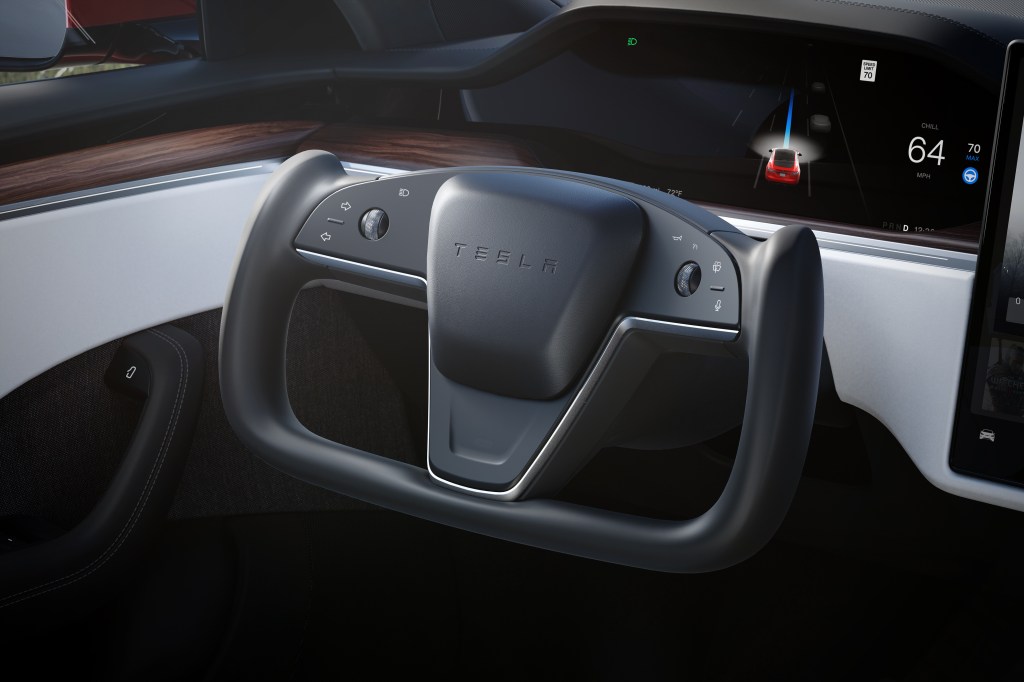Tesla’s fix for its Autopilot recall of more than 2 million vehicles is being called “insufficient” by Consumer Reports, following preliminary tests.
Kelly Funkhouser, the nonprofit organization’s associate director of vehicle technology, tells TechCrunch she discovered it’s still possible to cover the cabin camera while using Autopilot, meaning drivers can neutralize one of the two main ways the car monitors if they are paying attention to the road.
What’s more, Funkhouser says she did not notice any differences when activating or using Autopilot’s flagship feature, Autosteer, outside of the controlled-access highways where Tesla says the software is designed to be used.
While the testing isn’t comprehensive, it shows questions remain unanswered about Tesla’s approach to driver monitoring — the tech at the heart of the recall.
The group, which has a long history of critically evaluating both Tesla’s tech and its vehicles, plans to do more extensive testing in the coming weeks. Funkhouser says Consumer Reports has not yet evaluated other changes, like more prominent visual alerts on the Model 3 sedan and Model Y SUV, because it has only received the over-the-air software update on its Model S sedan.
Tesla also added a suspension policy that will deactivate Autopilot for one week if “improper usage” is detected, which Funkhouser said she did not encounter during two drives lasting between 15 and 20 miles each.
The recall, announced last week, affects more than 2 million cars in the U.S. and Canada and comes in the middle of a two-year investigation by the National Highway Traffic Safety Administration (NHTSA). It focused heavily on the Autosteer feature, which is designed to keep a car centered in a lane on controlled-access highways, even around curves.
Tesla tells drivers they must pay attention to the road and keep their hands on the wheel while using Autosteer, and monitors this through a combination of a torque sensor in the steering wheel and, in its newer cars, the in-cabin camera. But NHTSA said in documents released last week that it viewed those checks as “insufficient to prevent misuse.”
Tesla does not restrict the use of Autosteer to controlled-access highways, though. Instead, drivers can activate Autosteer on other roads so long as certain base conditions are met (like visible lane markers). As part of the recall, NHTSA said Tesla would be adding “additional checks upon engaging Autosteer and while using the feature outside controlled access highways and when approaching traffic controls.”
Some owners feared this meant Tesla would limit Autosteer and restrict it to controlled-access highways — similar to how Ford and General Motors treat their respective Blue Cruise and SuperCruise systems. As the update began to roll out over the weekend, a few even shared thoughts in online forums on how to avoid it by disconnecting Tesla’s cellular or Wi-Fi radios.
But such drastic measures apparently aren’t necessary, according to Funkhouser’s tests. While Tesla highlights in the most recent software update’s release notes that the camera “can now determine driver inattentiveness and provide you with audible alerts, to remind you to keep your eyes on the road when Autopilot is engaged,” that language is the same the company used when it first enabled cabin camera driver monitoring in 2021, she points out. And despite Tesla saying in the release notes that it has “[i]ncreased the strictness of driver attentiveness requirements when using Autosteer and approaching traffic lights and stops signs off-highway,” Funkhouser said those changes weren’t noticeable in her preliminary testing — in part because it’s hard to know exactly what Tesla means to begin with.
All this makes it unclear if, or how much, Tesla modified the camera’s ability to monitor driver attentiveness in the update. (NHTSA declined to comment, and instead directed questions to Tesla. Tesla disbanded its press department years ago.)
“None of this is very prescriptive or explicit in terms of what it is they’re going to [change],” Funkhouser says.































Comment